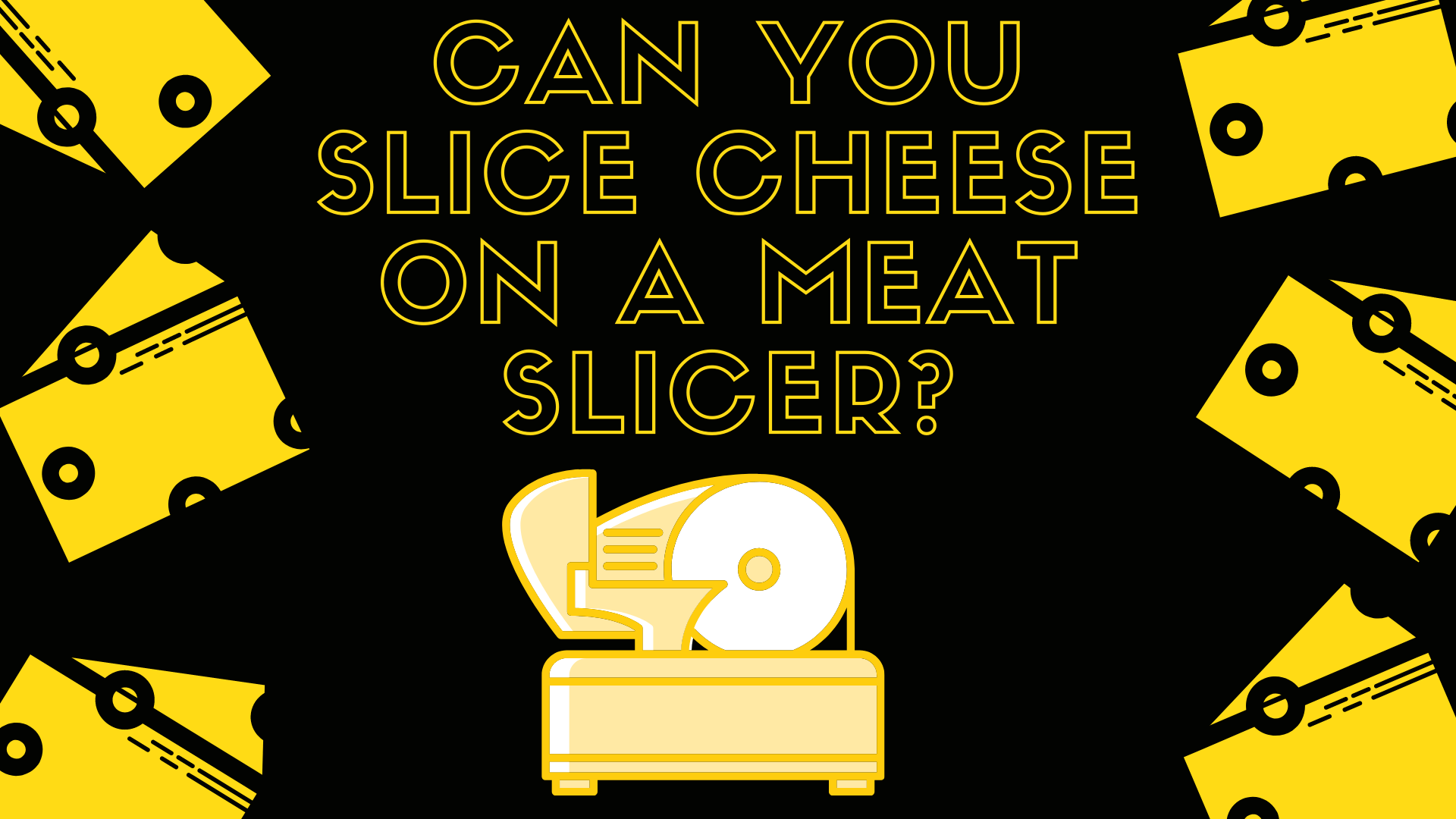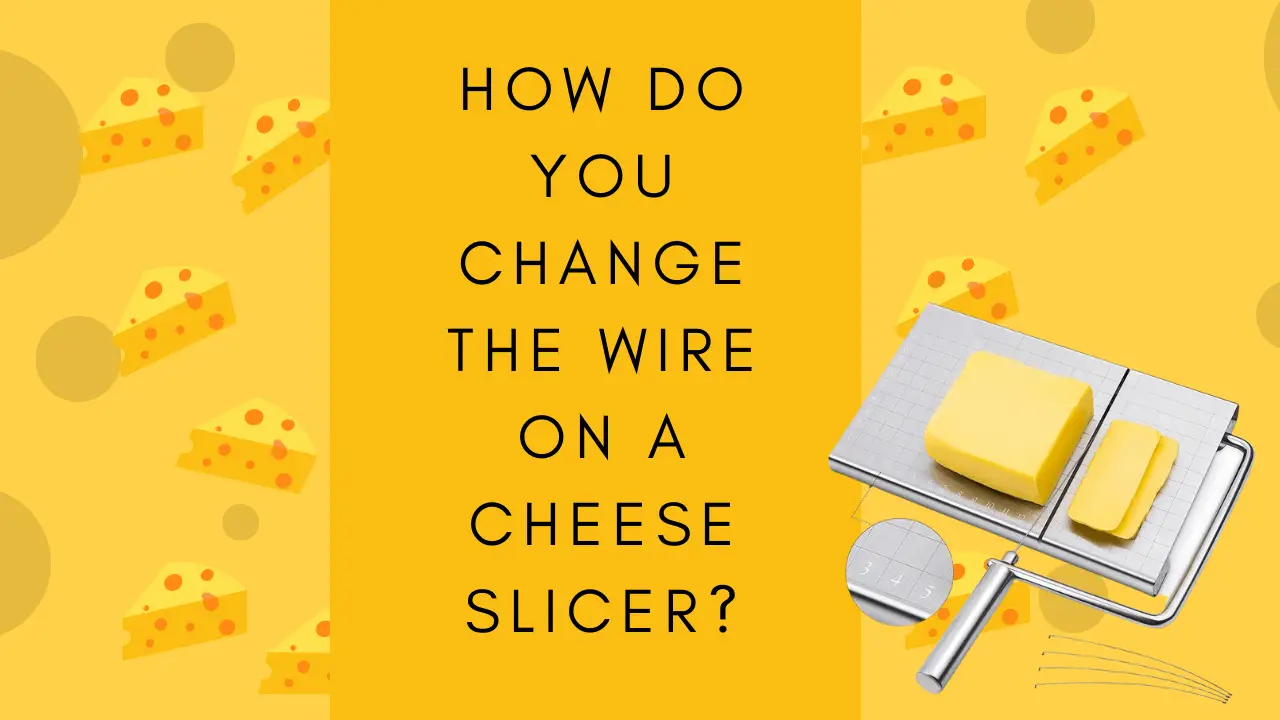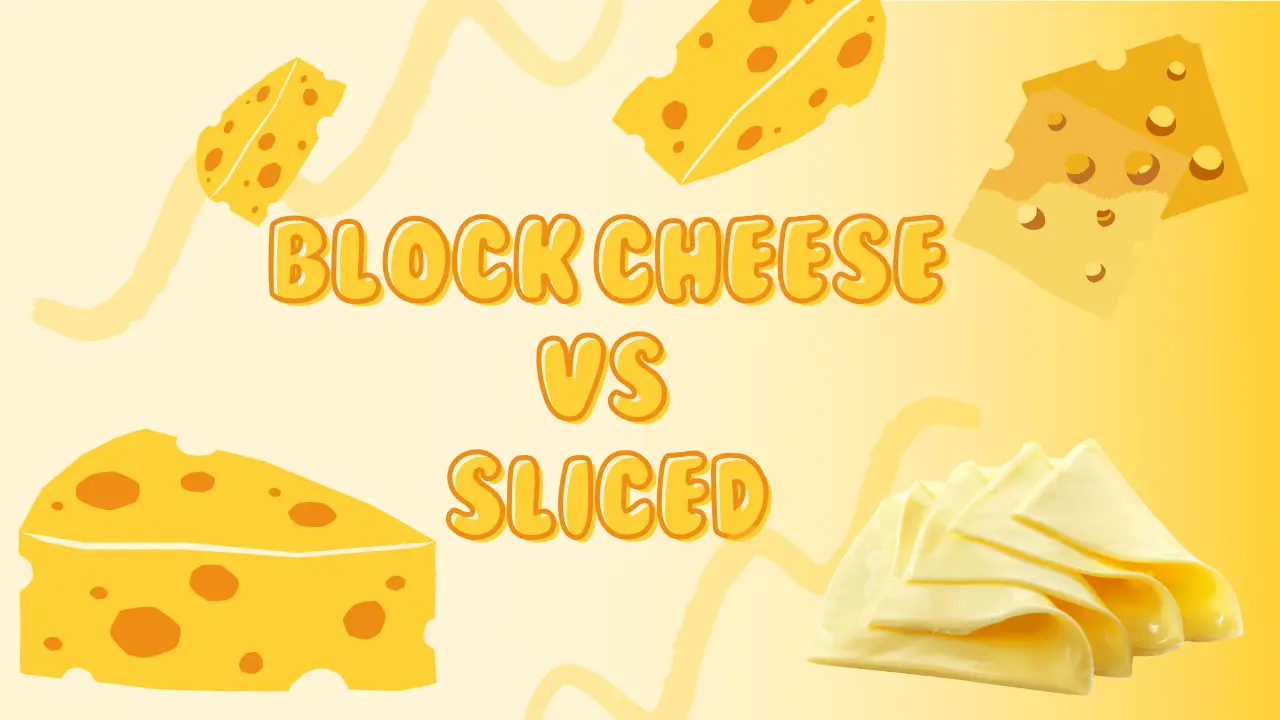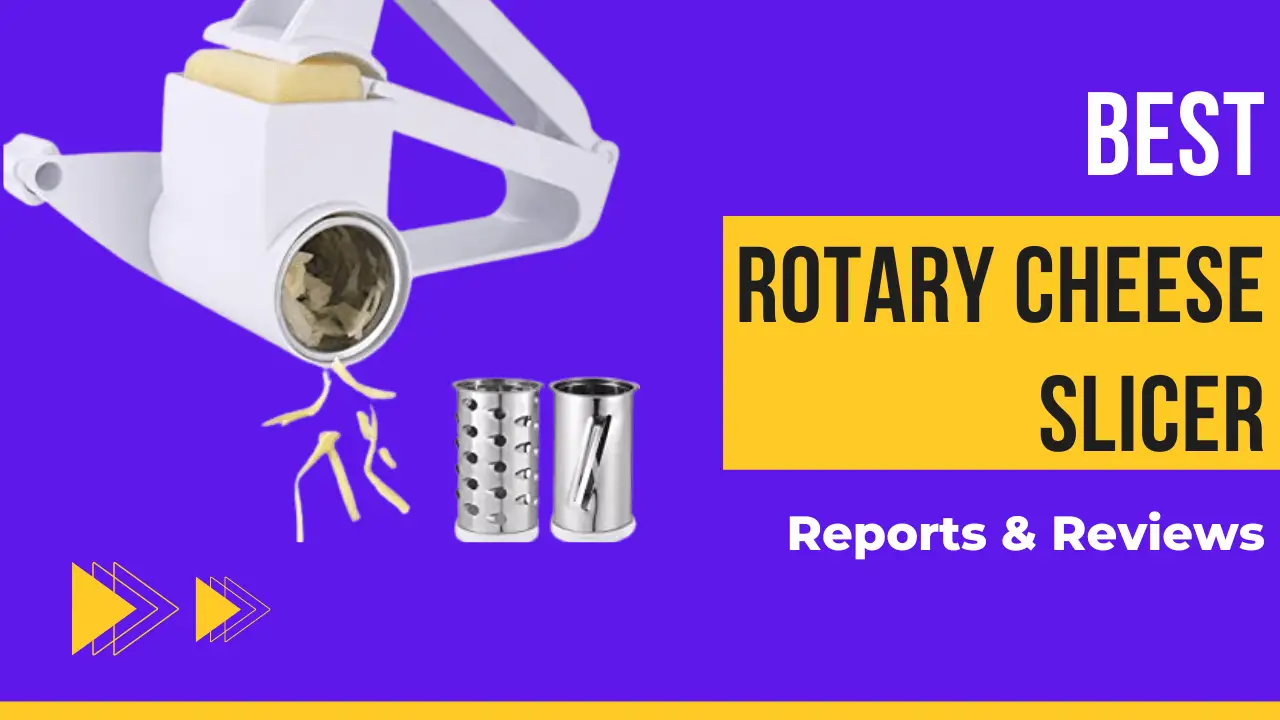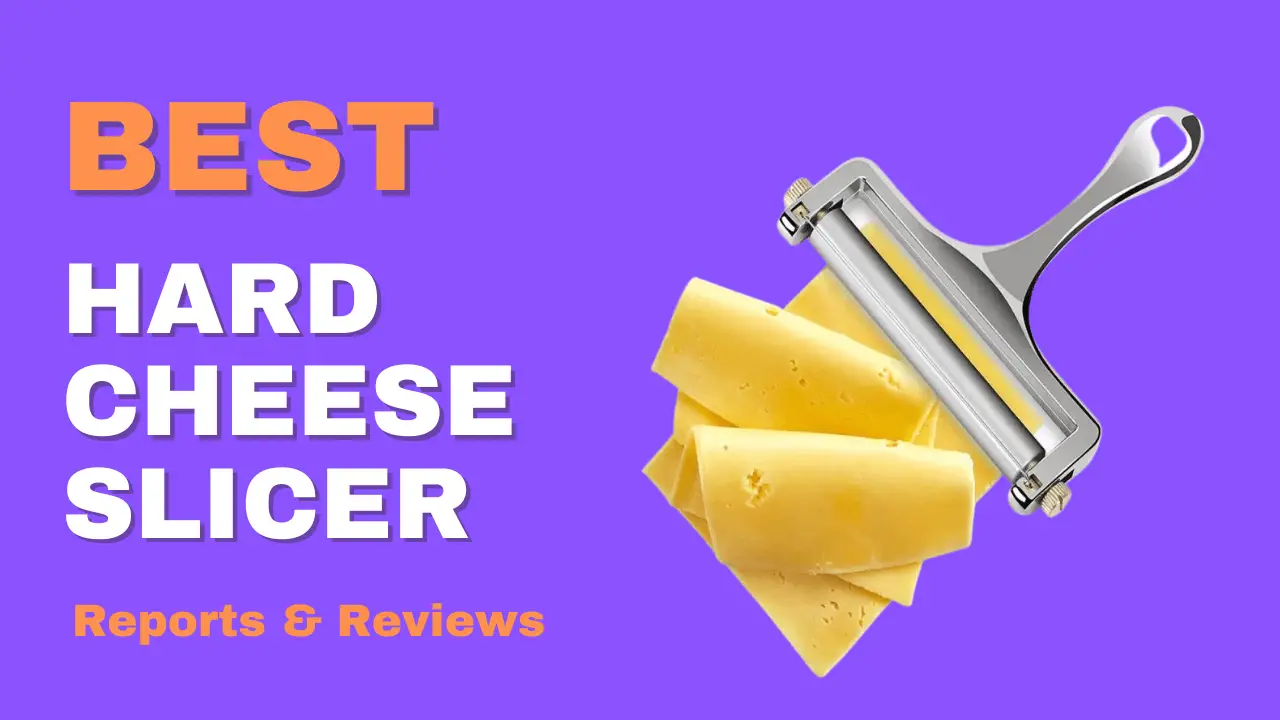Cheese boards and hand-held cheese slicers are essential tools for cheese lovers, but they serve slightly different purposes. A cheese board is typically a flat, often decorative surface used for serving and displaying a variety of cheeses, often accompanied by fruits, nuts, and bread. On the other hand, a hand-held cheese slicer is a tool used to cut cheese into uniform slices, cubes, or wedges. The choice between a cheese board and a hand-held cheese slicer depends largely on the occasion, the types of cheese served, and personal preference.
Cheese Board: Overview
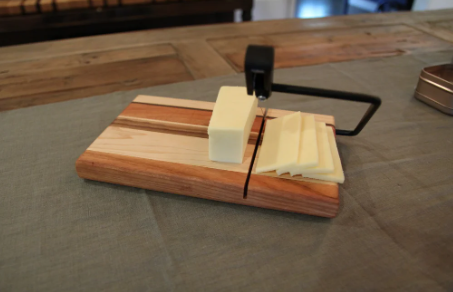
c, typically made of wood, marble, or slate, designed to display and serve various types of cheese. It often has built-in compartments, grooves, or trays for crackers, fruits, and other accompaniments. Some cheese boards even include a set of specialized cheese knives for cutting different cheese textures.
Hand-held Cheese Slicer: Overview
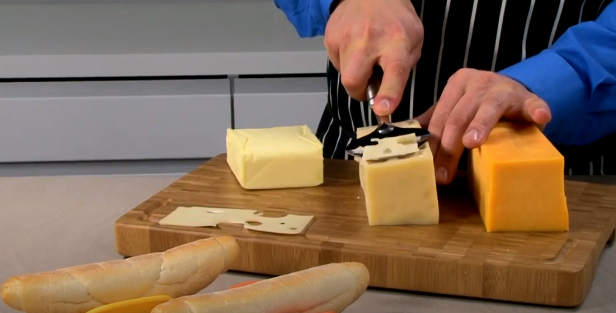
A hand-held cheese slicer is a compact, portable tool to cut cheese into even slices or wedges. These slicers come in various styles, such as wire, roller, or plane types, and are typically made of stainless steel or plastic.
Key Differences Between Cheese Boards And Hand-Held Slicers
- Function: Cheese boards are designed for serving and presenting cheese, while hand-held slicers focus on cutting.
- Versatility: Cheese boards can accommodate various cheese types and accompaniments, whereas slicers are for cutting cheese.
- Portability: Hand-held slicers are compact and easy to carry, while cheese boards are generally larger and less portable.
Pros And Cons Of Cheese Boards
Pros:
- Great for presentation and serving
- Versatile for various cheese types and accompaniments
- Durable and long-lasting
Cons:
- It can be bulky and less portable
- More expensive than hand-held slicers
Pros And Cons Of Hand-Held Slicers
Pros:
- Compact and portable
- Affordable
- Precise and even cheese slices
Cons:
- Limited to cutting cheese
- It may not work well with all cheese types
How To Choose The Right Cheese Board?
When selecting a cheese board, consider the following factors:
- Material: Choose a durable and easy-to-clean material, such as wood, marble, or slate.
- Size: Pick a size that accommodates the number of cheeses and accompaniments you typically serve.
- Features: For convenience, look for boards with built-in compartments, grooves, or trays.
- Style: Select a design that complements your home’s décor and style. The Right Hand-held Slicer
When selecting a hand-held slicer, consider the following factors:
- Type: Choose between wire, roller, or plane slicers based on your cutting preferences and the types of cheese you typically serve.
- Material: Opt for durable, food-grade materials like stainless steel or BPA-free plastic.
- Adjustability: Look for slicers with adjustable thickness settings for added versatility.
- Ergonomics: Select a slicer with a comfortable grip and easy-to-use design.
Popular Cheese Board Brands And Models
- Picnic at Ascot: Known for their high-quality bamboo cheese boards with built-in compartments and cheese toolsets.
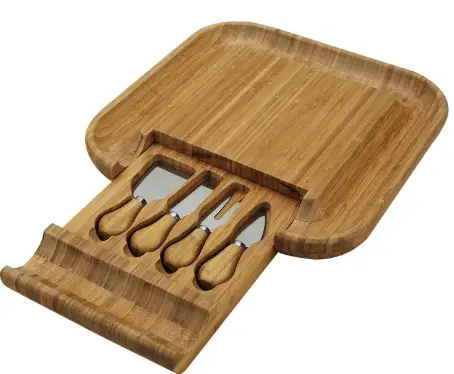
Picnic at Ascot Cheese Board - Boska Holland: Offers stylish and functional cheese boards made from various materials, including marble, slate, and wood.
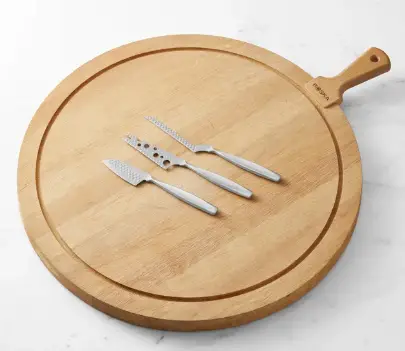
Boska Holland Cheese Board - Royal Craft Wood: Produces elegant, eco-friendly bamboo cheese boards with grooves for crackers and built-in knife storage.
Popular Hand-Held Slicer Brands And Models
- Westmark: Renowned for their German-engineered cheese slicers with adjustable wire cutters and sturdy construction.
- Prodyne: Offers a variety of cheese slicers, including wire and plane types, with ergonomic designs and stainless steel blades.
- OXO: Known for their user-friendly, durable hand-held cheese slicers with adjustable thickness settings.
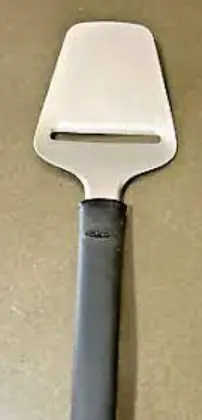
OXO Hand-Held Cheese Slicer
Tips For Using Cheese Boards
- Allow cheese to come to room temperature before serving for optimal flavor and texture.
- Arrange cheeses from mildest to strongest to guide your guests through the tasting experience.
- Include a variety of textures, flavors, and colors for visual appeal and to accommodate different preferences.
- Pair cheeses with complementary accompaniments like crackers, fruit, nuts, and honey.
Tips For Using Hand-Held Slicers
- Clean your slicer thoroughly before and after use to prevent cross-contamination and maintain its performance.
- For softer cheeses, chill them before slicing to make cutting easier.
- Adjust the thickness setting to suit the type of cheese and your desired presentation.
Cheese Pairings And Presentation Ideas
- Brie or Camembert with honey, fig jam, and fresh grapes
- Gouda or Cheddar with apple slices, walnuts, and whole-grain crackers
- Blue cheese with dried apricots, candied pecans, and dark chocolate
Cleaning And Maintenance
- Wash your cheese board and slicer with warm, soapy water and dry them thoroughly to prevent bacteria growth and maintain their appearance.
- Regularly oil wooden cheese boards with food-grade mineral oil to protect and preserve the surface.
- Sharpen or replace worn-out blades or wires on your hand-held slicer to ensure optimal cutting performance.
FAQs
Can I use a hand-held slicer on a cheese board?
Yes, you can use a hand-held slicer directly on a cheese board. However, avoid damaging the board’s surface with the slicer’s blade or wire.
Which type of hand-held slicer is best for soft cheeses?
A wire cheese slicer is generally the best option for soft cheeses, as it glides through the cheese without squishing it.
What’s the best way to clean a wooden cheese board?
Wash your wooden cheese board with warm, soapy water and a soft cloth, then rinse and dry it thoroughly. Avoid soaking the board in water, as this can cause it to warp or crack.
How often should I oil my wooden cheese board?
It’s a good idea to oil your wooden cheese board every few months or when it looks dry or faded. Use food-grade mineral oil to protect and preserve the surface.
Can I use a hand-held slicer for other foods besides cheese?
Yes, some hand-held slicers can also be used for slicing other soft foods, such as butter, fruits, or vegetables. However, clean your slicer thoroughly between uses to prevent cross-contamination.
Conclusion
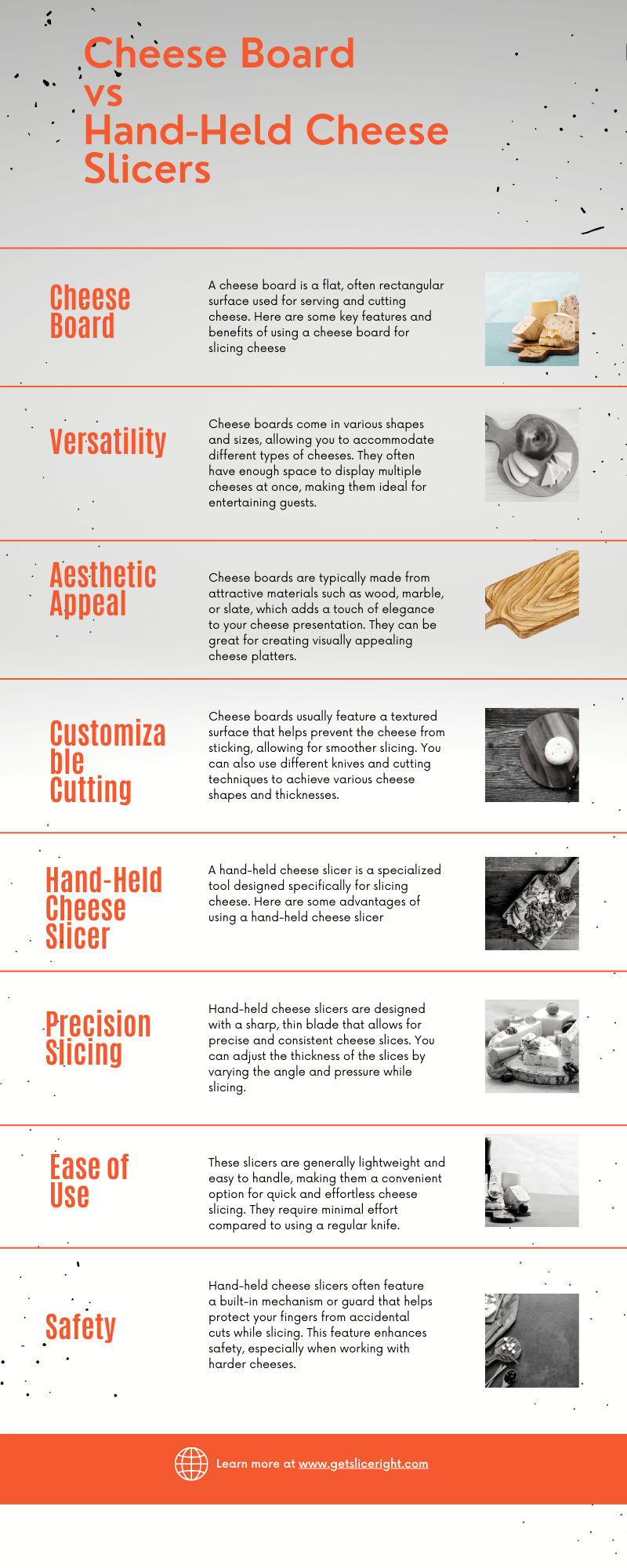
Cheese boards and hand-held slicers have advantages and disadvantages, so it’s essential to consider your specific needs and preferences. Cheese boards are ideal for presentation and serving, while hand-held slicers focus on precise, even cutting. Evaluate your priorities, and you’ll be able to find the perfect tool to elevate your cheese game.
External Links:
- Picnic at Ascot: High-quality bamboo cheese boards with built-in compartments and cheese toolsets.
- Boska Holland: Stylish and functional cheese boards made from various materials, including marble, slate, and wood.
- Royal Craft Wood: Elegant, eco-friendly bamboo cheese boards with grooves for crackers and built-in knife storage.
- Westmark: German-engineered cheese slicers with adjustable wire cutters and sturdy construction.
- Prodyne: Various cheese slicers, including wire and plane types, have ergonomic designs and stainless steel blades.
- OXO: User-friendly, durable hand-held cheese slicers with adjustable thickness settings.
Table: Similarities and Differences between Cheese Board vs. Hand-held Slicer
| Similarities | Differences |
|---|---|
| Both are used in the process of cutting and serving cheese | Cheese boards are designed for presentation and serving, while hand-held slicers are designed for cutting |
| Both can be made from various materials such as wood, plastic, and metal | Cheese boards are typically larger and made of materials like wood, marble, or slate, while hand-held slicers are smaller and made of stainless steel or plastic |
| Both require proper cleaning and maintenance | Cheese boards require occasional oiling, while hand-held slicers may require blade or wire sharpening or replacement. |
| Both can be found in a range of styles and designs | Cheese boards often include built-in compartments, grooves, or trays for accompaniments, while hand-held slicers focus on cutting functionality and ergonomics |

Mario Batali is a renowned author, food enthusiast, and passionate chef who has dedicated his life to exploring the world of culinary arts. With a love for sharing his knowledge and experiences, Mario has become a prominent figure in the food blogging community, inspiring countless readers with his creativity and expertise.
In addition to his culinary prowess, Mario Batali is also a talented writer with a flair for engaging storytelling. He launched his own food blog to share his recipes, cooking tips, and personal experiences in the kitchen. Over time, Mario’s blog gained a loyal following of food enthusiasts who appreciate his unique approach to cooking and his dedication to using only the finest ingredients.
Mario Batali’s passion for food and his commitment to sharing his knowledge with others have made him a true inspiration in the world of culinary arts. Through his blog, cookbooks, and public appearances, Mario continues to spread his love of food and the joy of cooking with his ever-growing fanbase.

